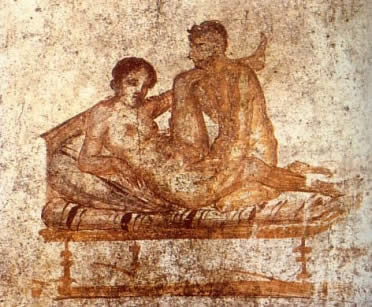
The word eroticism derives from the Greek word eros, which is the word for love and sensual desire.
In modern languages, the word eroticism is more related to everything related to sexuality, but not only to the sexual act.
The Greeks aimed to distinguish between eros and agape, which is the most romantic love.
Between the Phoenicians and the Mesopotamians there was a sacred prostitution, which reached classical Greece, and when it passed to Rome it became more lust, bordering on the pornographic.
Greek culture by giving great importance to the beauty of the body, also gave great importance to the erotic art.
Erotic representations can be found in painting, sculpture, literary works, musical compositions, and on clay tablets, which they used as amulets.
In the cave paintings there are already erotic figures, highlighting the sexual organs as a symbol of fertility.
The ancient Greeks painted many sexual scenes in their ceramics, as they did not have the concept of pornography, legal relationships are not distinguished from illicit ones.
The Greeks were the first to document homosexual sexual relations, and later they also documented the first case of lesbianism in art.
In Greece the masculine ideal was one with a small penis, which later passed to Rome.
In the temple of Dionysus at Delfo, sculpted phalluses were found, so it is thought that they were elements for the blame.
At the Museum of Cycladic Art in Greece, a erotic art collection. There are also very good erotic collections in the museums of Cyprus, Italy, and in France.
The representations, in paintings or sculptures that for the Greeks were natural and everyday, can scandalize some contemporaries. They represent in art the meaning that the sex in greek life.
An erotic scene from the fourth century BC, carved in a mirror, was found from Corinth.